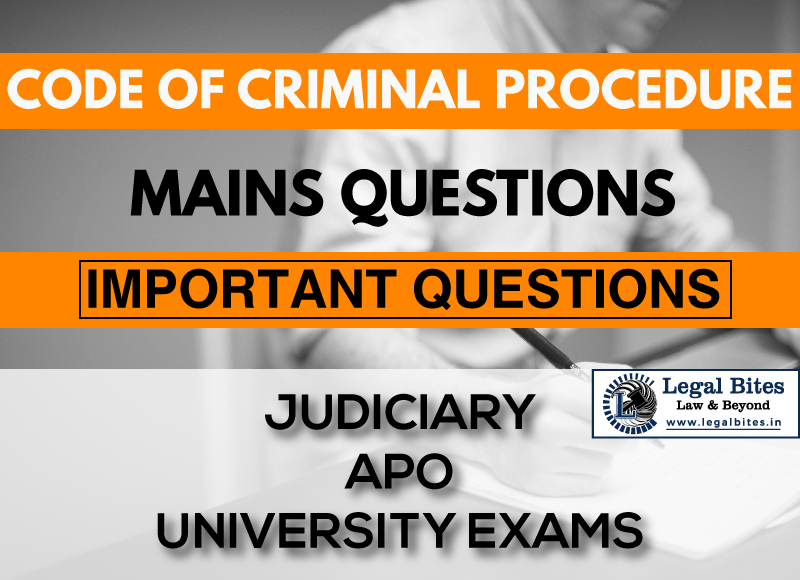Whether Armed Forces can be used to disperse an unlawful assembly?
Question: Whether Armed Forces can be used to disperse an unlawful assembly? Find the answer to the mains question only on Legal Bites. [Whether Armed Forces can be used to disperse an unlawful assembly?] Answer Article 19 (1)(b) of the Constitution of India 1949, provides that ‘All citizens shall have right to assemble peaceably and without arms. But this… Read More »
;
Question: Whether Armed Forces can be used to disperse an unlawful assembly? Find the answer to the mains question only on Legal Bites. [Whether Armed Forces can be used to disperse an unlawful assembly?] Answer Article 19 (1)(b) of the Constitution of India 1949, provides that ‘All citizens shall have right to assemble peaceably and without arms. But this right is subject to reasonable restrictions like maintenance of public order and tranquillity. Thus, CrPC grants powers to...
Question: Whether Armed Forces can be used to disperse an unlawful assembly?
Find the answer to the mains question only on Legal Bites. [Whether Armed Forces can be used to disperse an unlawful assembly?]
Answer
Article 19 (1)(b) of the Constitution of India 1949, provides that ‘All citizens shall have right to assemble peaceably and without arms. But this right is subject to reasonable restrictions like maintenance of public order and tranquillity. Thus, CrPC grants powers to its functionaries to disperse members of unlawful assemblies to ensure that public order and peace can be maintained in society.
According to Section 141 of the Indian Penal Code, 1860, To constitute an unlawful assembly the following 3 conditions must co-exist:-
- There must be an assembly of five persons.
- The assembly must have a common object and
- The common object must be to commit one of the five illegal objects specified in the section.
The power to disperse the unlawful assembly can be exercised in three different ways under Sections 129 to 131 of the Code of Criminal Procedure. To maintain public order and tranquillity, certain armed force officers are also empowered to disperse assembly according to the procedure laid down under Section 131 of the Code of Criminal Procedure.
In connection to the use of armed forces of the nation to disperse unlawful assembly, Section 130 of CrPC provides that if the Executive Magistrate believes that the unlawful assembly cannot be dispersed by use of civil force and its dispersal is necessary for public security, such Magistrate may cause it to be dispersed by the armed forces.
The Magistrate may use the assistance of any group of persons belonging to any of the three armed forces (Army, Navy, and Air Force) and with such officers under his command, he may order the arrest and confinement of persons who formed the part of such assembly.
However, clause 3 provides that the armed forces and the commanding Magistrate should use as little force as required and cause minimal possible injury to any person or property.
Important Mains/Long Questions for Judiciary, APO & University Exams
- CRPC Mains Questions Series Part I: Important Questions
- CRPC Mains Questions Series Part II: Important Questions
- CRPC Mains Questions Series Part III: Important Questions
- CRPC Mains Questions Series Part IV: Important Questions
- CRPC Mains Questions Series Part V: Important Questions
- CRPC Mains Questions Series Part VI: Important Questions
- CRPC Mains Questions Series Part VII: Important Questions
- CRPC Mains Questions Series Part VIII: Important Questions
- CRPC Mains Questions Series Part IX: Important Questions
- CRPC Mains Questions Series Part X: Important Questions
- CRPC Mains Questions Series Part XI: Important Questions


